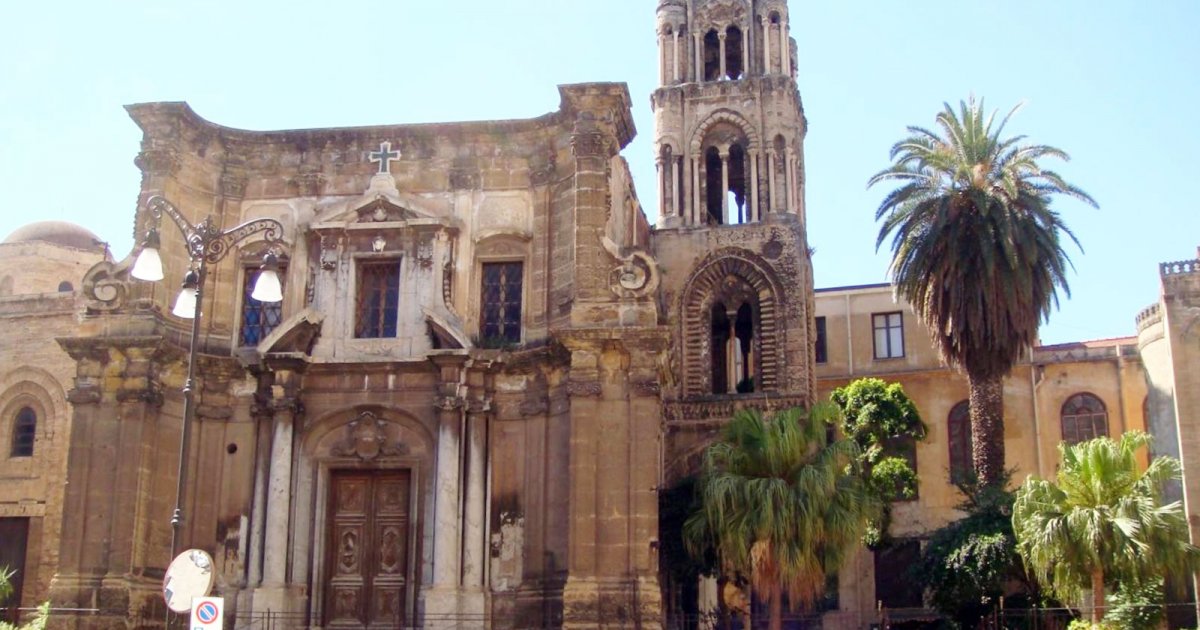LA MARTORANA CHURCH, Exterior
 Language: English / USA
Language: English / USA
Hi, my name’s Jill, and I’m your personal guide. Along with MyWoWo, I’d like to welcome you to one of the Wonders of the World: La Martorana Church, a gem of Norman architecture.
La Martorana Church, also known as Santa Maria dell’Ammiraglio, was built on the orders of George of Antioch, Grand Admiral of King Roger II’s fleet of the Kingdom of Sicily, to give thanks to the Virgin Mary, who he believed had rescued him at sea.
The main part of the church, the part around the dome, was completed in 1143. In 1185, there was an addition of an elegant entrance area, composed of a hall with splendid mosaic decorations, preceded by the bell tower which is still there. Unfortunately, this part underwent extensive renovation work at the end of the 16th century, which included the demolition of the original facade and the elegant portico that linked it to the bell tower. The concave facade that faces the square dates to the 17th century, even though it is interesting, its shape and size are completely different from the design of the Norman church.
In 1433, the church was given over to the Benedictine nuns of the adjoining convent, who unfortunately took down the main apse to make way for a large choir in which they could all gather together to sing.
During the 18th century, changing tastes and fashions led to the painting of new frescoes and rich decorations in colored marble. Finally, in 1870, the architect Giuseppe Patricolo supervised the restoration of the building, reconstructing some of the medieval elements, but destroying many of the works that in his view were not worth preserving.
The most striking element of the exterior is the bell tower, which is unfortunately missing the top part and the distinctive Arab-style dome, demolished in 1726 following damage from an earthquake.
You’ll notice how subtly the light adjusts, almost seeming to slide off the Norman part. The left part of the Baroque facade contrasts with the austere original structure from the Norman period, which ends with the typical dome resting on an octagonal base. The entrance under the bell tower leads into the part of the building that has been altered most often, with the additions in 1185 and the later Baroque transformations.
An interesting fact: the name of the church derives from the name of the nun Eloisa Martorana, who founded the Benedictine monastery that the church was handed over to in 1433.



